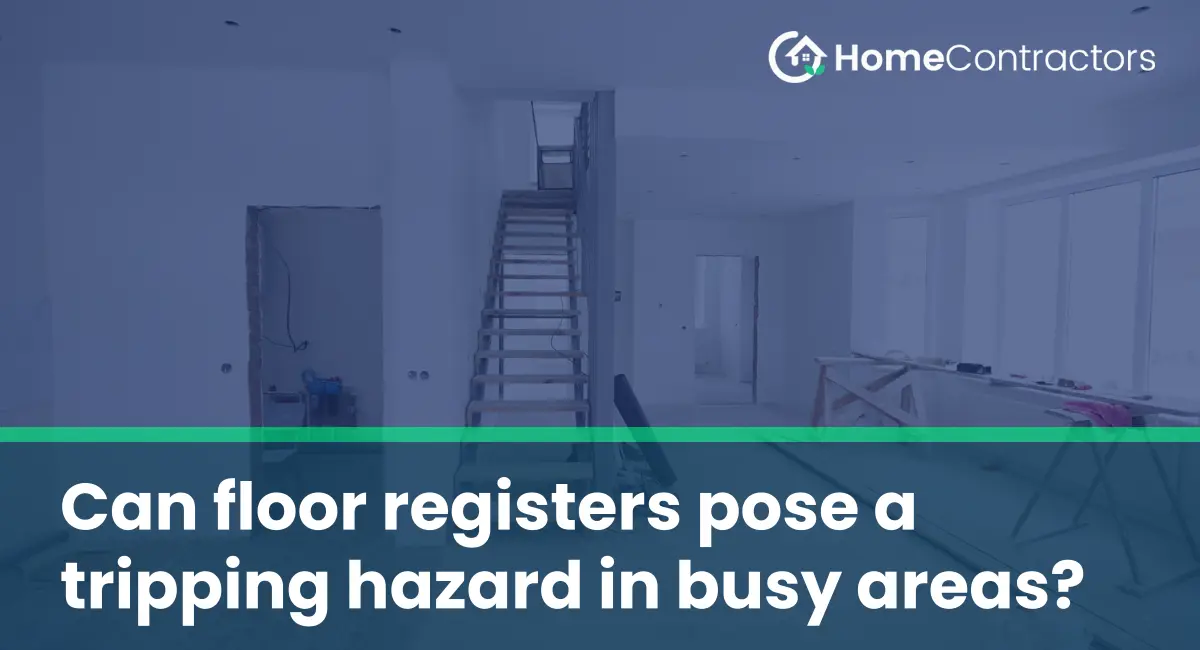Floor registers are a common feature in many homes and buildings. They are designed to provide proper air circulation by allowing warm or cool air to flow between different areas or rooms. While floor registers serve a functional purpose, some people may wonder if they pose a tripping hazard, especially in busy areas where foot traffic is high. In this article, we will explore this question and discuss the potential risks associated with floor registers.
Understanding Floor Registers
Before diving into the potential hazards, it is essential to understand what floor registers are and how they function. A floor register is a vent cover that is usually made of metal or plastic and sits on top of an opening in the floor. These openings are connected to ductwork, which allows air to flow between different rooms or spaces. The main purpose of a floor register is to control the temperature in a specific area by regulating the air supply.
Tripping Hazards
In busy areas with high foot traffic, anything that raises the floor level or creates a subtle height difference can potentially pose a trip hazard. Floor registers, being slightly raised above the floor, can indeed present a tripping hazard if not properly considered and maintained. Here are some factors to consider:
- Location and Visibility: The location of floor registers is crucial in determining their potential hazard. If they are placed in an area with heavy foot traffic, near doorways, or in frequently used walkways, there is a higher chance of people tripping over them. Additionally, poor visibility due to furniture or other objects covering the registers can increase the likelihood of accidents.
- Size and Design: The size and design of floor registers can contribute to their potential tripping hazards. Large or irregularly shaped registers can be more problematic as they create a stable platform for stumbling. Registers with sharp edges or corners can also increase the risk of injury in case of a trip or fall.
Preventive Measures
While floor registers can pose a tripping hazard, there are several preventive measures that can be taken to ensure safety in busy areas:
- Proper Placement: Placing floor registers away from high foot traffic areas or relocating them to less frequented spaces can reduce the risk of accidents. They should not be positioned near staircases, doorways, or other areas where people are likely to walk.
- Adequate Visibility: Ensuring that floor registers are always visible and not obstructed by furniture, rugs, or other objects is vital. This can be achieved by regular inspections and keeping the surrounding area clear.
- Securing and Covering: If there is a specific floor register that is frequently causing tripping accidents, it may be helpful to secure it to the floor to prevent movement or replace it with a flush-mounted option. Additionally, installing safety grates or covers with rounded edges can further minimize the hazards associated with floor registers.
Regular Maintenance
Regular maintenance is essential to ensure safety when it comes to floor registers. Here are some maintenance tips to consider:
- Cleaning: Regularly cleaning floor registers will help prevent the accumulation of dust, debris, or obstacles that could make them less visible or unstable.
- Leveling: Over time, floor registers may become unevenly aligned with the floor due to shifting or settling. Ensuring that they are properly leveled will help reduce the risk of trips and falls.
While floor registers can pose a tripping hazard in busy areas, taking appropriate preventive measures can significantly mitigate the risks. By locating them properly, ensuring visibility, and implementing regular maintenance, we can ensure that floor registers contribute to the comfort and functionality of the space without compromising safety.
